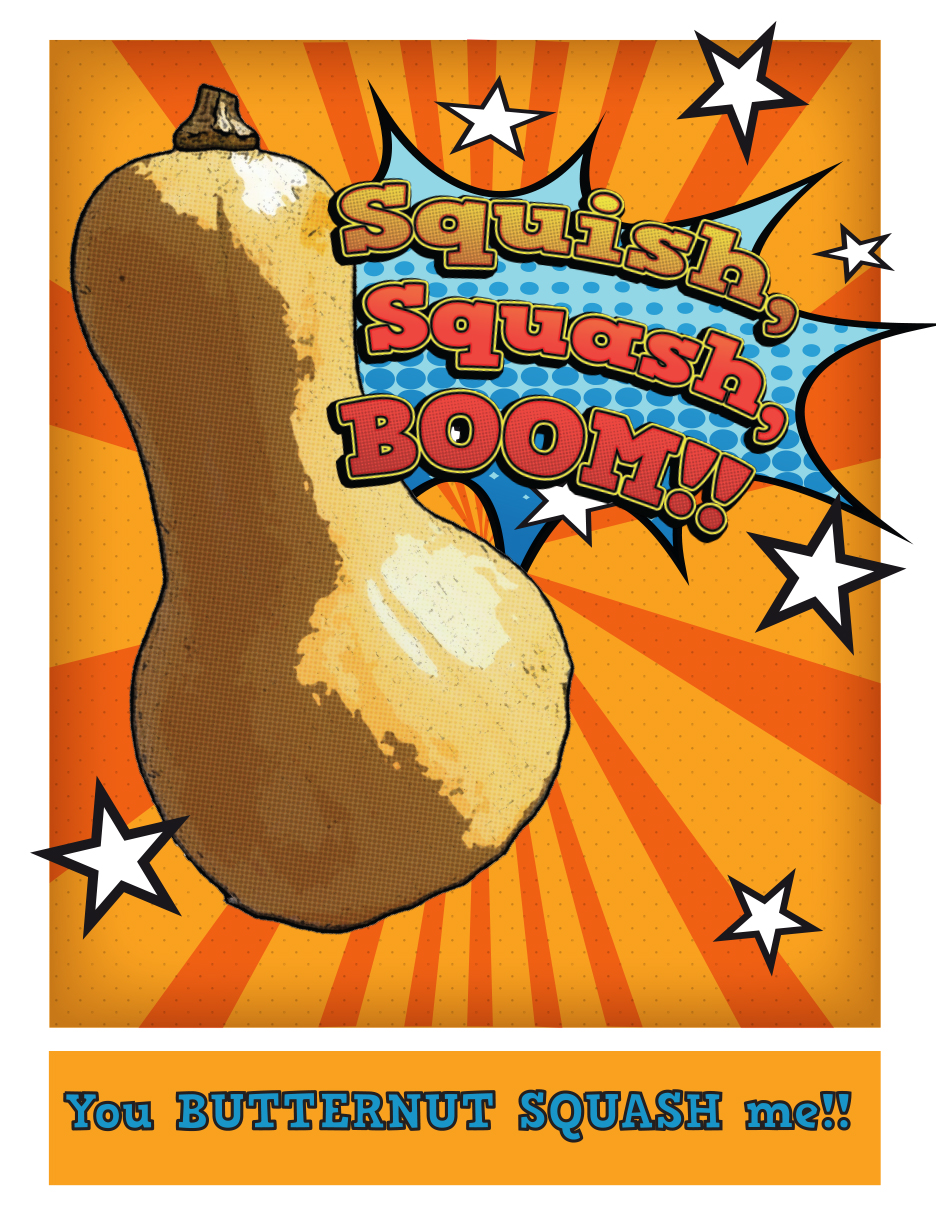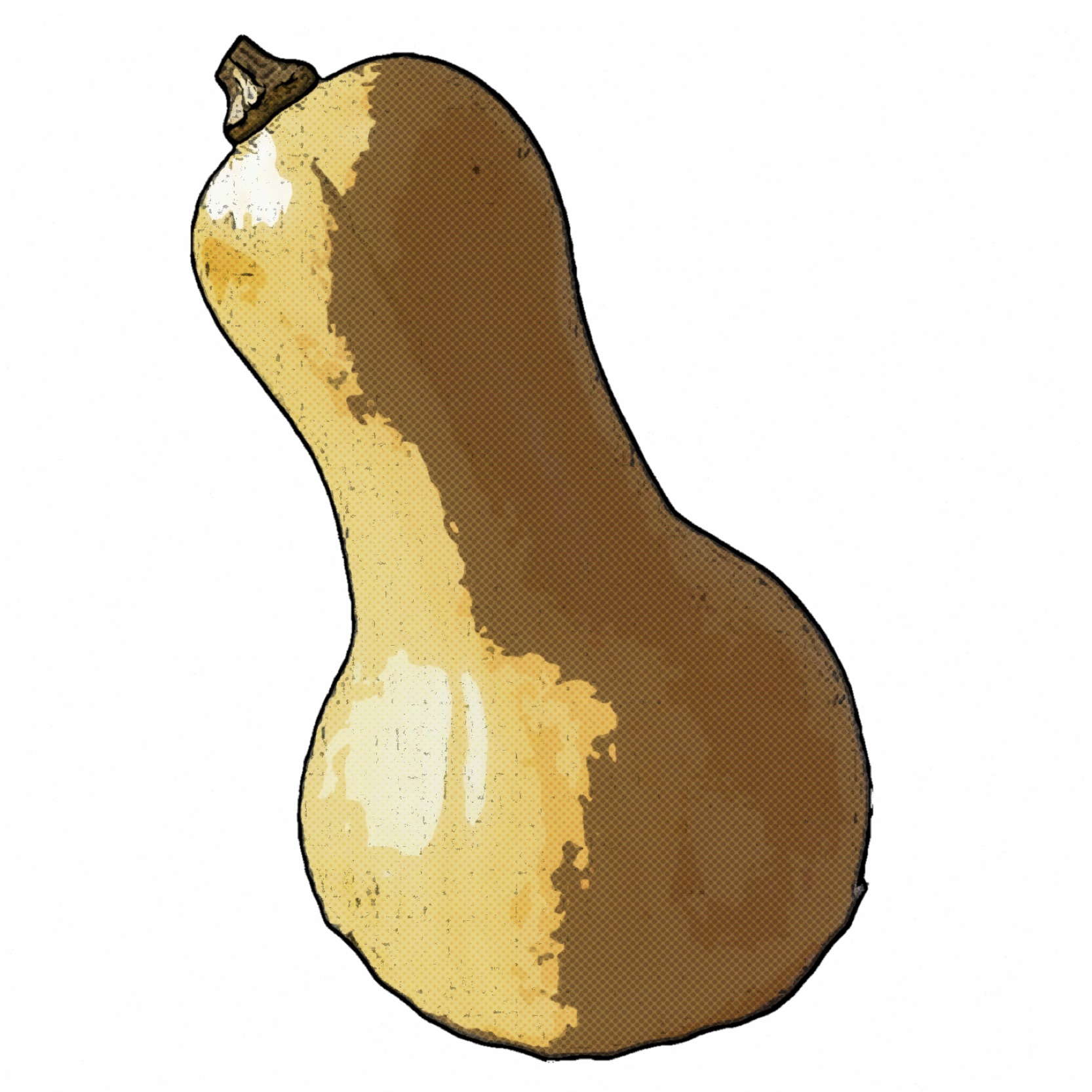
In the Past: Between Mexico and Guatemala, wild squash were discovered and cultivated for their seeds 10,000 years ago. Eventually, the squash was developed into a plant similar to what we know today, eaten for its sweet orange flesh.
In the Soil: Butternut squash is in the family Curcurbitae, related to zucchini, cucumber, and other winter squash like the pumpkin. It grows on a vine with large leaves, and develops into a long orange shaped gourd. Winter squash, including butternut, are an easy crop to grow in a garden.
In the Kitchen: When cut open, butternut squash has a deep orange flesh. Once cooked, the flesh of the squash gourd has a sweet, nutty taste. The seeds can be roasted and eaten just like pumpkin seeds. Squash can be peeled and roasted or added to soups, or baked whole and mashed or pureed, or eaten straight out of the skin.
In the Body: Squash are a natural source of complex carbohydrates and are full of potassium, vitamin A, C, folic acid, pantothenic acid and copper.
In Connecticut: Fresh squash is generally available mid July through the end of December, though proper storage may extend availability. Some varieties of squash, if stored well, can last up to 180 days!
Recipes
Click on the name of the below recipes to download complete recipe, and meal crediting information.
The below recipes were contributed by Connecticut Food Service Directors.*
*Recipe and Meal Contribution Review completed by Put Local on Your Tray. SFAs must check the crediting information for accuracy prior to including the item in reimbursable meals.
Roasted Butternut Squash with Cinnamon

Harvest Entree Salad With Turkey
Roasted Butternut Squash Hummus
Food Service recipes from other organizations looking to increase local procurement in schools:
Butternut and Sweet Potato Bake (MFTS)
Butternut Squash Lasagna (VT FEED)
Winter Vegetable Soup with Noodles (VT FEED)
If you have a recipe using this product that was successful in schools and would like to share please send it to us!
Downloadable Files
STICKER
 Loading...
Loading...
POSTER
